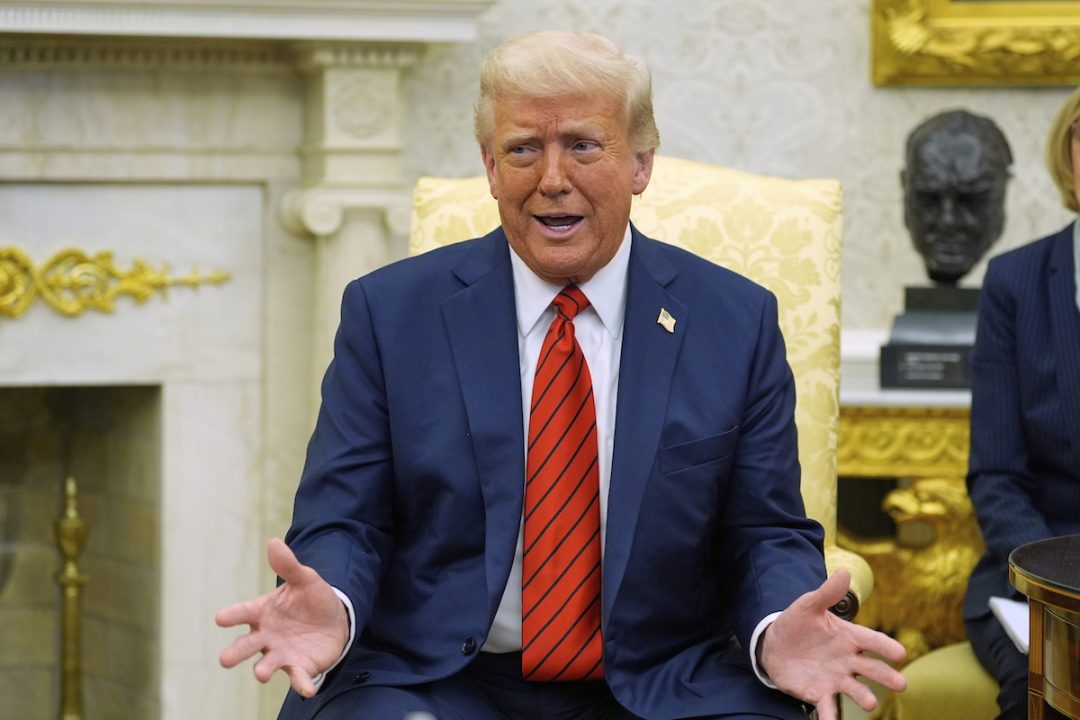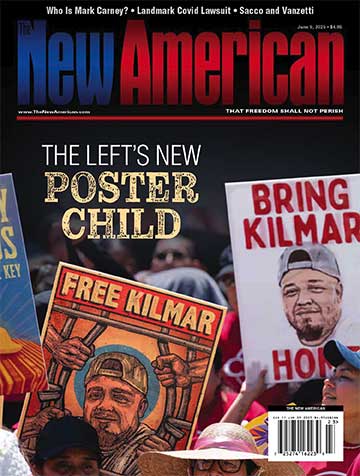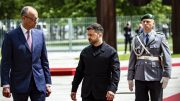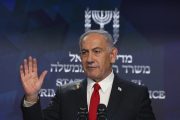
President Donald Trump’s promise of brokering a peace deal between the two warring neighbors in Eastern Europe on Day 1 of his new administration is long overdue, has proven more difficult than he likely imaged, and might not happen at all. Nevertheless, the president is hoping for a breakthrough in the coming days, but says his administration is ready to walk away if it doesn’t happen.
Trump said in a Truth Social post on Saturday that he hoped Russia and Ukraine would soon agree on a peace deal. This came a day after he indicated the White House was going to wash its hands of the conflict if the two sides don’t come to terms. Trump told reporters on Friday:
Quickly, we want to get it done. Now if for some reason one of the two parties makes it very difficult, we’re just going to say, “you’re foolish, you’re fools, you’re horrible people, and we’re going to just take a pass.” But hopefully we won’t have to do that.
In that same post, the president said business deals could emerge between the United States and both rival nations should peace prevail.
Secretary of State Marco Rubio echoed his boss’ sentiment and frustration on Friday:
We’re not going to continue with this endeavor for weeks and months on end. So we need to determine very quickly now, and I’m talking about a matter of days, whether or not this is doable in the next few weeks.… If it’s not possible, if we’re so far apart that this is not going to happen, then I think the president is probably at a point where he’s going to say, “well, we’re done.”… We’re not going to continue to fly all over the world and do meeting after meeting after meeting if no progress is being made. We’re going to move on to other topics that are equally if not more important in some ways to the United States.
Disillusionment
Trump has expressed disillusionment with Russian and Ukrainian leadership after repeated attempts to broker peace failed. During an interview with NBC News in March, he said he was “pissed off” at Russian President Vladimir Putin and threatened to level secondary tariffs against Russia. The Kremlin refused to ink a U.S.-brokered, 30-day full ceasefire agreement that Ukraine had agreed to. Trump’s special envoy, Steve Witkoff, has visited Russia three times, which has only yielded a 30-day ceasefire on Ukraine’s energy infrastructure and a partial ceasefire in the Black Sea.
Over the weekend, Putin announced an unexpected one-day ceasefire for Easter, but both sides accused each other of breaching it. Kyiv said Russian forces continued artillery fire, and the Russian Defense Ministry said Ukraine committed about 1,300 violations, including artillery strikes and drone attacks.
Russia’s Terms
Moscow, for its part, has said a peace deal cannot be reached without some very specific agreements. First, an acceptable deal must address the “root causes” of the war. NATO expansion and the prospect of Ukraine joining the Western military alliance is at the center of this war, according to the Kremlin. The Russians have been complaining about NATO’s post-Soviet eastward expansion for many years. U.S. diplomat George Kennan, who authored the U.S. policy of containment of the Soviet Union back in 1947, warned in 1997 that “expanding NATO would be the most fateful error of American foreign policy in the entire post-Cold War era.” He argued that asking European nations to choose between NATO and Russia would result in conflict.
Putin’s chief justification for the “special military operation” is to prevent his neighbor from joining NATO. But the war has only intensified Ukraine’s desire to join. Ukrainian President Volodymyr Zelensky has repeatedly asked to become a member. And while that hasn’t happened, the war has indeed pushed two other nations, Finland and Sweden, into NATO’s arms.
No NATO for Ukraine
The Trump administration, as a way to end the war, has indeed agreed to rule out Ukraine joining NATO. Moscow welcomed the news, with Kremlin spokesman Dmitry Peskov telling reporters Monday, “We have heard from Washington at various levels that Ukraine’s membership in NATO is out of the question. This is something that satisfies us and coincides with our position.” The United States is waiting for a response from Kyiv. Zelensky said on Monday that Ukraine was ready to move toward a permanent ceasefire, but, continuing a pattern finger-pointing common to both sides, blamed Russia for prolonging the war.
Territory Concessions, Military Aid
Another Russian requirement is that it keeps the regions it has taken from Ukraine. Including what it captured in 2014, Russia now controls the entire eastern part of the Ukraine. The Trump administration’s proposals include potential recognition of Russia’s 2014 annexation of Crimea.
Russia also wants Western nations to stop arming Ukraine. That will prove difficult. Just this month, Ukraine’s European allies pledged $24 billion in new military support. European leaders have issued multiple comments indicating a desire to keep the war going.
Russian UN envoy Vassily Nebenzia said on Thursday that a full ceasefire is “simply unrealistic at this stage.” He accused the West of using negotiations as a cover to rearm Ukrainian forces.





